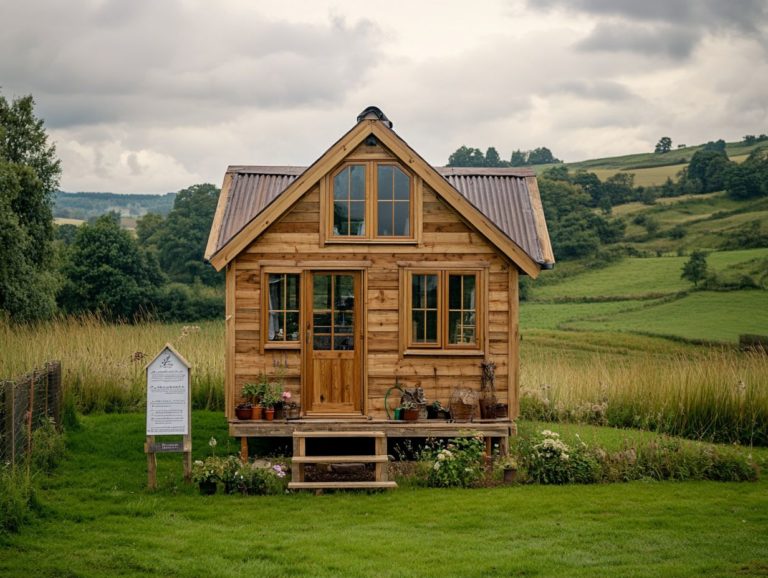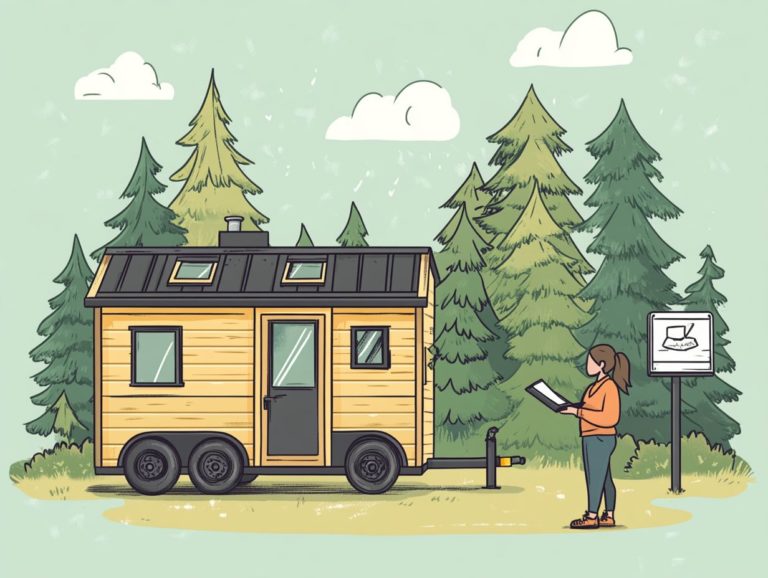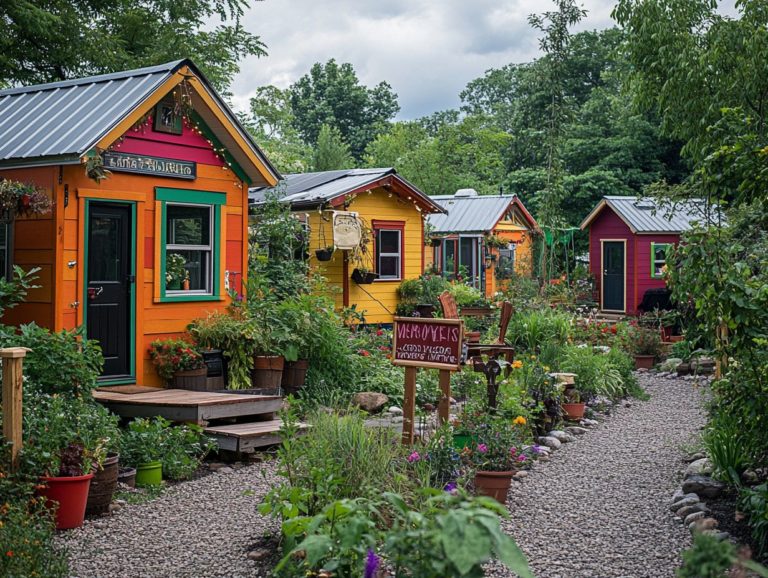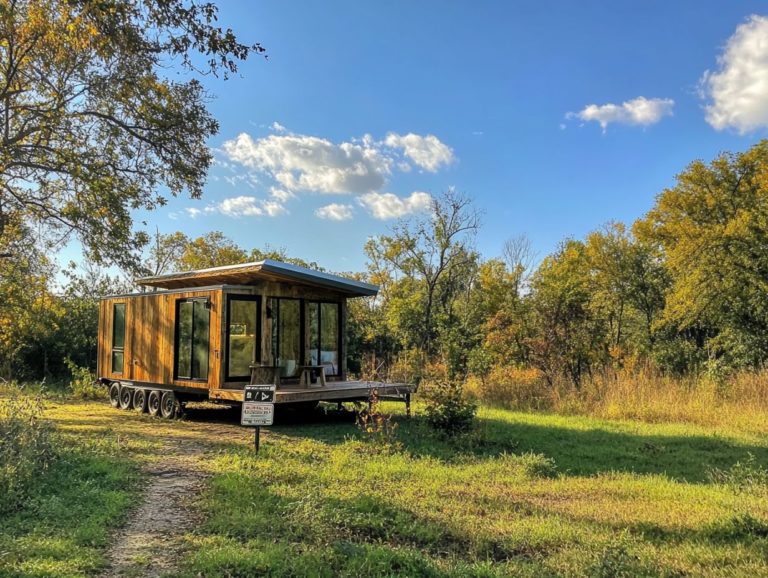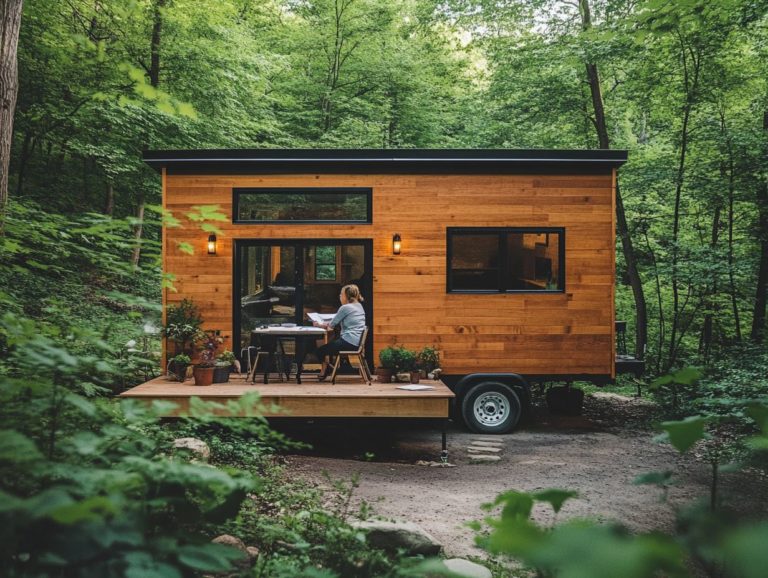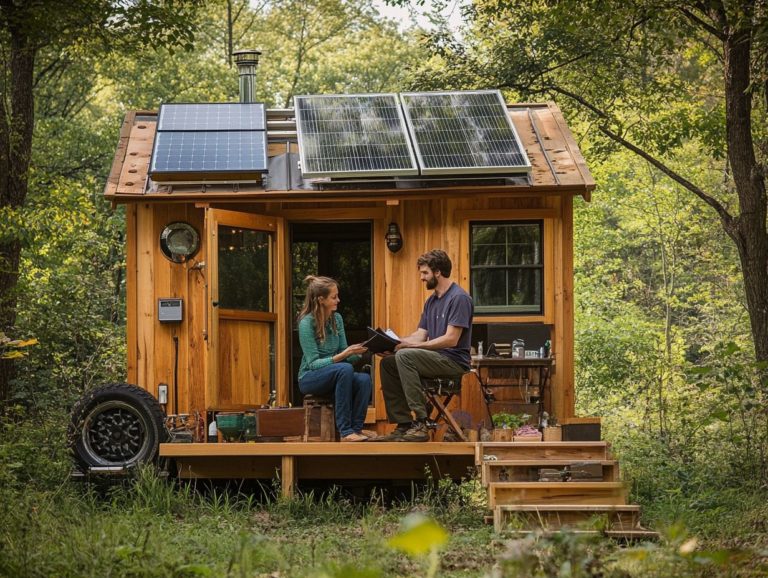Insurance Options for Tiny Houses Explained
As the tiny house movement gathers steam, understanding the details of tiny house insurance is crucial for both current owners and those dreaming of a simpler lifestyle.
With a range of coverage options from traditional homeowner’s insurance to specialized policies designed specifically for tiny homes navigating this landscape can seem daunting.
Let s dive into the exciting world of tiny house insurance! We will clarify the types of tiny house insurance options available, examine factors that impact coverage and pricing, and provide valuable tips for selecting the right policy to protect your unique living space.
Uncover the best ways to effectively safeguard your tiny home!
Contents [hide]
Key Takeaways:
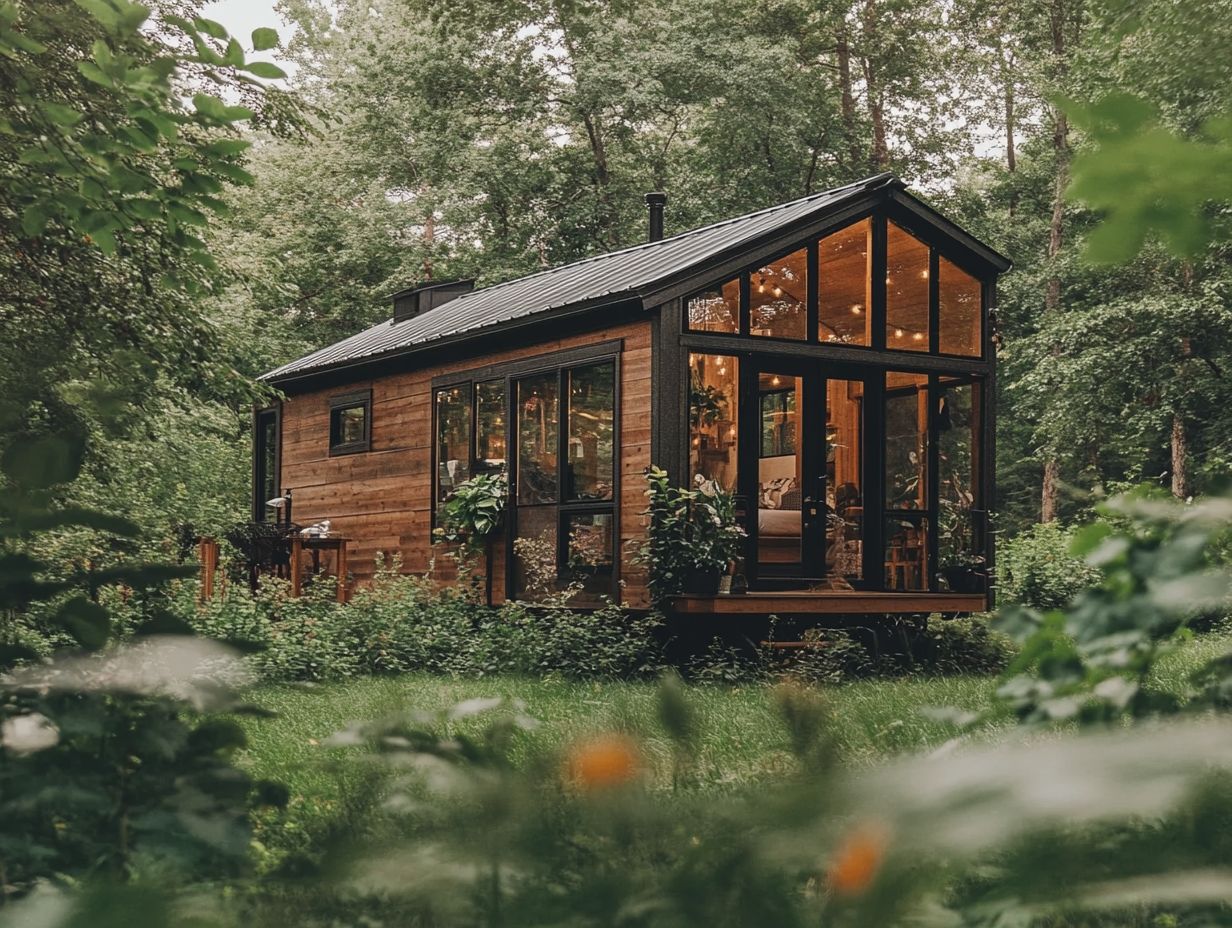
- Tiny houses require specialized insurance coverage that differs from traditional homeowner’s insurance policies.
- Factors such as location, size, and intended use of the tiny house can affect insurance coverage and cost.
- When choosing insurance for a tiny house, compare options and consider the unique needs and features of your specific tiny house.
What is Tiny House Insurance?
Tiny house insurance is specialized coverage designed for you and your unique living space. These homes are often defined as dwellings under 400 square feet, significantly smaller than traditional homes. This type of insurance addresses the distinct needs of tiny living enthusiasts.
It takes into account factors like property value, building codes, and potential liabilities that arise with the tiny house movement.
As a tiny homeowner, understanding the nuances of insurance is vital. These compact structures are often located in unconventional spots, such as tiny house communities or mobile homes. Unlike traditional homeowners insurance, tiny house insurance may include aspects like RV insurance or mobile home insurance if your dwelling is on the move.
Your coverage options can encompass liability insurance, which safeguards you from claims related to injuries or damages that may occur on your property. Collaborate with insurance agents who specialize in tiny house lifestyles to secure the most relevant policies for your situation.
Types of Insurance for Tiny Houses
When contemplating insurance for tiny houses, it’s essential to grasp the diverse coverage options available. These options are designed to meet the unique needs of these homes, whether they re tiny houses on wheels or accessory dwelling units (ADUs) (which are small living units that can be attached to existing homes).
You can explore a range of choices, from traditional homeowners insurance policies to specialized coverage tailored for tiny living and RV insurance. Each option provides distinct benefits, ensuring you find the right fit for your tiny abode.
Homeowner’s Insurance
Homeowners insurance for tiny houses offers essential coverage for property damage, liability, and personal belongings. This ensures you are protected against unforeseen events like natural disasters or theft. This type of insurance for tiny homes is crucial for securing your financial peace of mind while enjoying the tiny home lifestyle.
As the Tiny House Movement continues to gain traction, the traditional homeowners insurance model can adapt to meet the unique needs of these compact dwellings. Coverage typically includes protection for the structure, your personal property, and liability claims, often tailored to the specific risks associated with tiny living.
Costs can vary significantly based on your home s value, location, and construction materials. It s essential for you to thoroughly evaluate your financial decisions. Insurance professionals play a vital role in helping you navigate these considerations, ensuring you find policies that provide adequate protection while aligning with your budget and lifestyle.
Explore your insurance options today!
RV Insurance
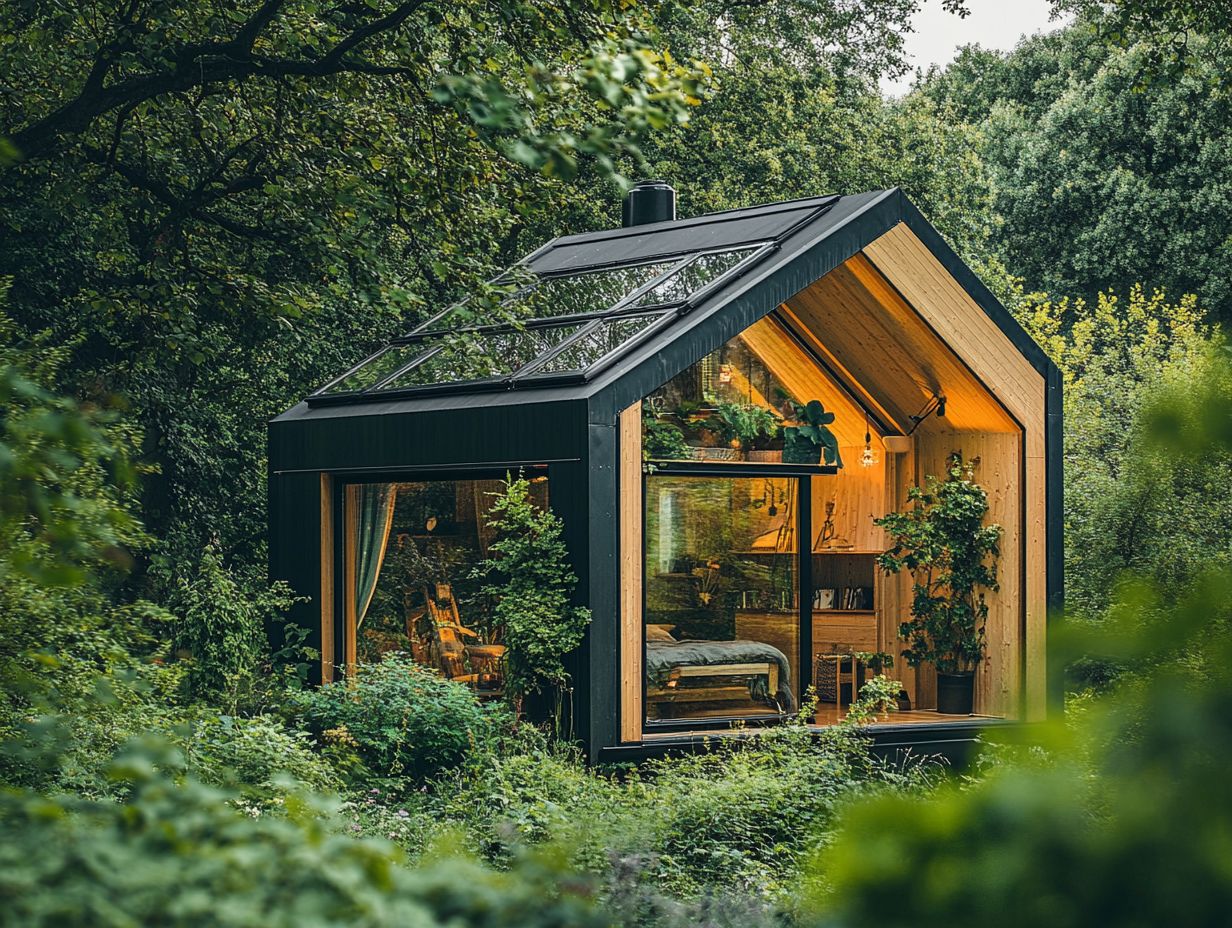
RV insurance is particularly relevant for you as a tiny house owner living in a mobile home. It offers protection specifically designed for mobile home insurance. This insurance covers various risks you might encounter while traveling and residing in your tiny house on wheels.
It includes coverage for liability issues and damage to the vehicle or specialized equipment.
Unlike traditional homeowners insurance, which focuses primarily on the structure itself and personal belongings within a fixed location, RV insurance extends its coverage to tackle the special challenges of life on the road. For instance, it may include comprehensive protection against accidents, theft, and natural disasters that could occur while you’re parked in different locations or navigating the tiny house movement.
It also provides essential liability coverage, which protects you against claims for damages or injuries caused to others. This is crucial to safeguard you against costly lawsuits. As a tiny house owner, it’s essential to explore more coverage options that fit your needs, ensuring a worry-free lifestyle on wheels.
Specialty Tiny House Insurance
Specialty tiny house insurance is crafted specifically for your unique needs as a tiny homeowner. It provides coverage options that traditional insurance may not fully address. This type of insurance often comes with features tailored to the tiny house movement, like protection for DIY builds and unique property features.
Unlike conventional policies, these specialized plans recognize the distinctive lifestyle that comes with tiny living. They account for factors such as mobility and the use of alternative construction materials. You might discover coverage for your personal belongings and custom installations that standard insurance often overlooks.
Insurance agents are instrumental in guiding you through these choices. They help you assess your specific needs and find policies that offer the protection you deserve. By presenting options that guard against particular risks such as theft, natural disasters, or liability they ensure that you can enjoy your minimalist lifestyle with peace of mind.
Factors Affecting Insurance Coverage and Cost
When determining the cost for tiny houses, a range of factors comes into play. These include location, size, intended use, and unique features that can impact property value and risk.
As a tiny homeowner, it’s essential for you to take these elements into account. This will help you secure the right coverage that aligns with both your financial decisions and your lifestyle choices in the tiny house movement.
Location
The location of your tiny home plays a pivotal role in shaping your insurance costs. If you’re in an area prone to natural disasters or high crime rates, you can expect those premiums to be higher. Understanding the local market can enable you to make informed decisions about your insurance needs.
For example, if your tiny home is nestled in a flood zone, it will likely trigger higher risk assessments, leading to additional coverages and associated costs. On the flip side, if your property is located in a burgeoning suburban area with lower risks like crime or natural disasters you might enjoy more favorable insurance terms.
Being close to urban centers or key amenities boosts your property value and expands your insurance options. This opens the door for tailored policies that perfectly align with your unique geographical context, giving you the flexibility to choose what works best for you.
Size and Features of Tiny House
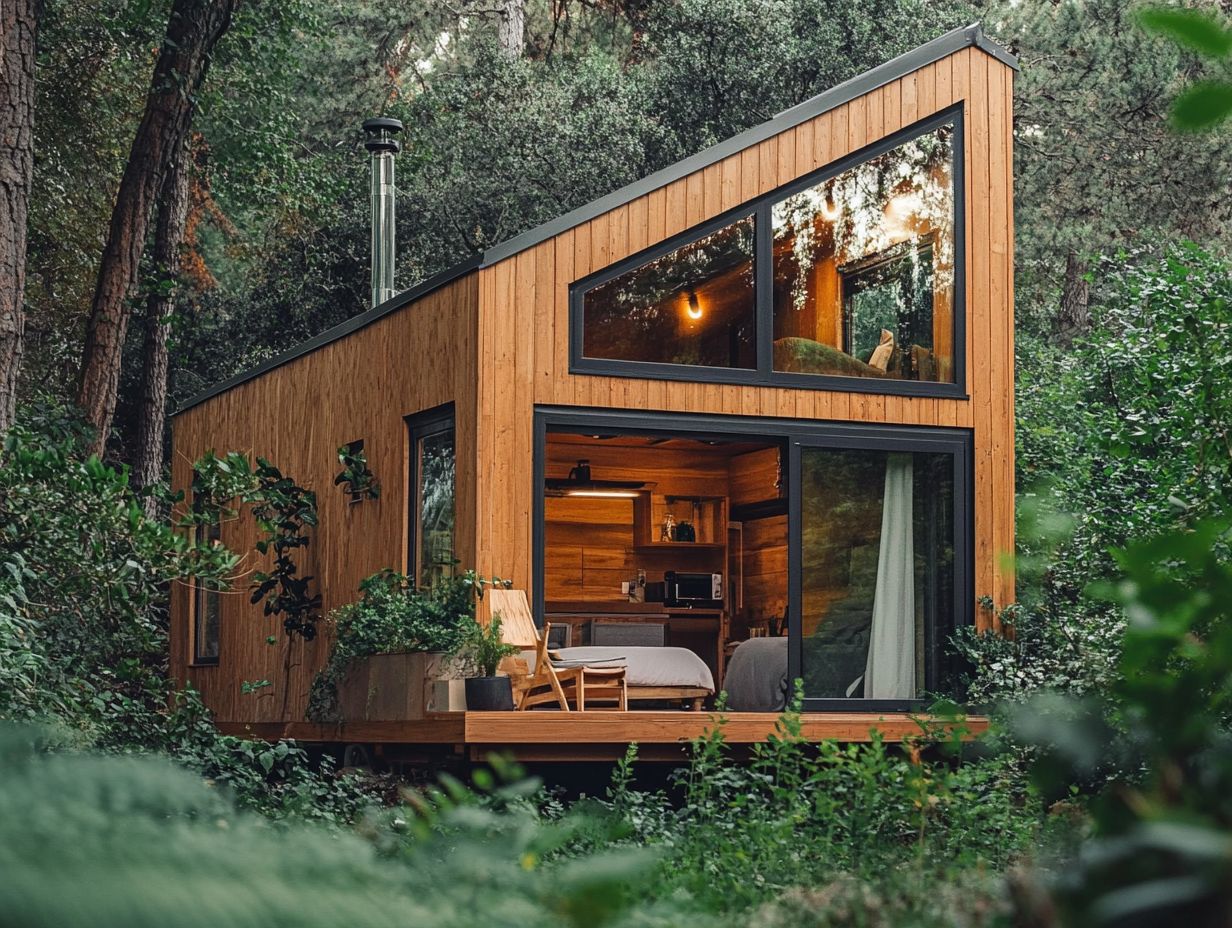
The size and features of your tiny house play a crucial role in determining your insurance coverage and costs. These aspects significantly impact property value and the risk factors insurers consider.
If your home has high-end finishes or custom builds, you may need additional coverage options tailored for specialty insurance.
Given the compact nature of these dwellings, they come with specific risks, such as fire hazards or damage from extreme weather, that traditional homes might not face. It’s essential to understand these risks when seeking insurance for tiny homes; overlooking them could lead to inadequate protection.
Accurately assessing the true value of your tiny home, while considering its distinctive characteristics, is vital to ensure that it receives the coverage it deserves from insurance professionals. This highlights the importance of working with experienced insurance agents who can tailor policies to meet the demands of modern living arrangements like yours.
Intended Use of Tiny House
Your tiny house can be more than just a living space; it can be your home, getaway, or rental. Understanding its intended use is key! Whether it s your primary residence, a vacation retreat, or a rental property, this choice plays a crucial role in determining your insurance coverage options and pricing.
If your tiny dwelling serves as your full-time residence, you’ll likely want comprehensive coverage that protects you from theft, fire, and natural disasters, while also addressing personal liability in case of accidents. Alternatively, if you’re renting out your tiny house to guests, you may need short-term rental insurance, which offers specific protections against property damage and guest-related liabilities. It’s also important to understand the ins and outs of tiny home insurance laws to ensure you’re adequately protected.
Consider local building codes and zoning laws. These can affect your insurance costs significantly, leading to tailored coverage that aligns with your unique lifestyle and financial needs.
How to Choose the Right Insurance for Your Tiny House
Selecting the right insurance for your tiny house requires thoughtful consideration of several key factors, such as coverage options, costs, and the distinct features that set your home apart from traditional residences.
By consulting with insurance professionals, you can navigate these choices with ease, ensuring you secure the best policy tailored to your specific needs.
Considerations and Comparison of Different Options
When exploring insurance options for your tiny house, it s essential to compare different types of coverage. Think about homeowners insurance versus specialty insurance specifically designed for tiny homes to ensure you choose the policy that fits you best.
Homeowners insurance generally covers the structure and personal belongings in a traditional home, but it might not fully address the distinctive features of tiny living. For those considering this lifestyle, understanding what kind of insurance do I need for a tiny house is crucial. In contrast, specialty insurance for tiny houses often includes coverage for factors like mobility and alternative building materials.
Key elements to consider include coverage limits, premiums, deductibles, and the specific risks tied to your location, such as natural disasters. Don t overlook liability protection, as this can vary significantly between standard and specialized policies.
By carefully evaluating these factors, you can make a well-informed choice about which insurance option will best safeguard your investment.
Frequently Asked Questions
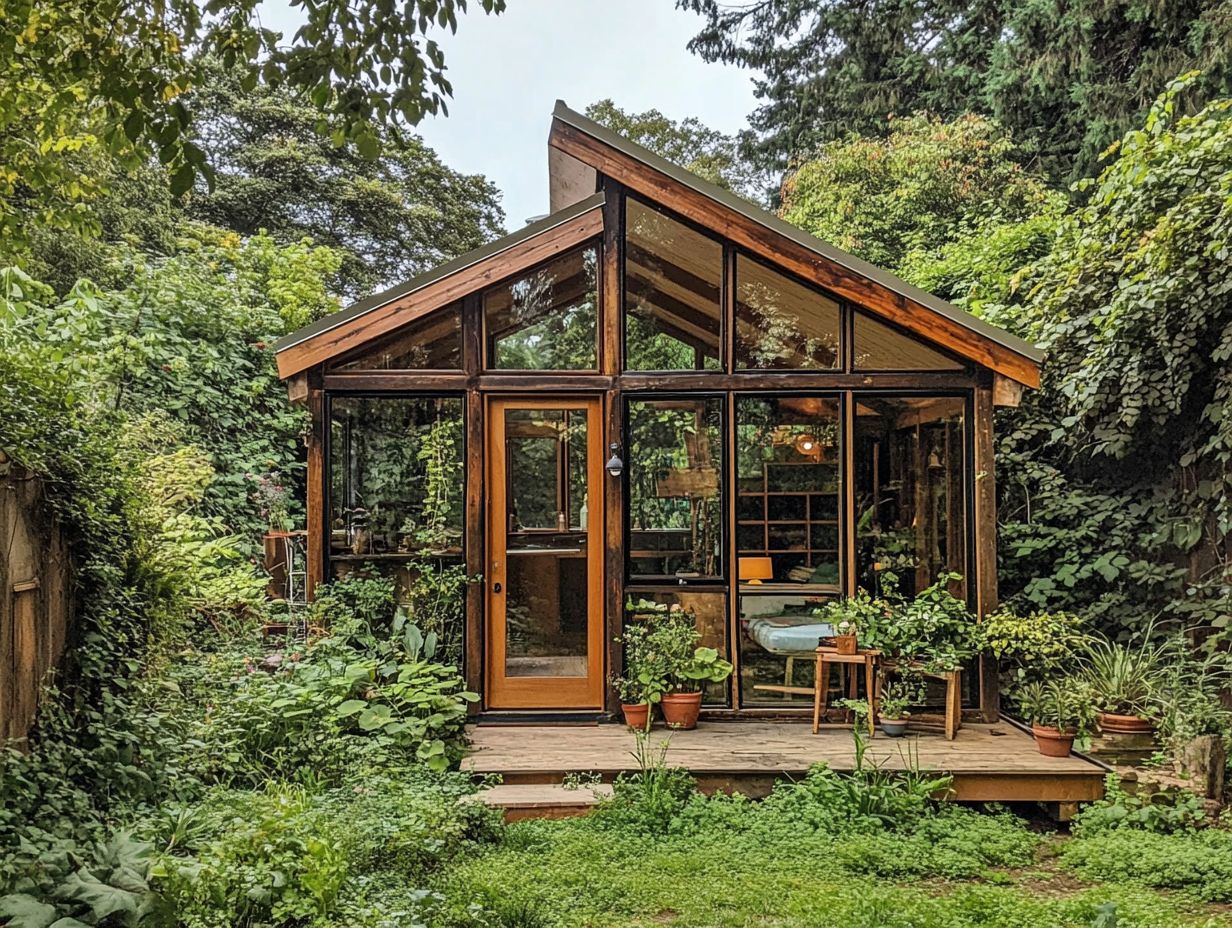
What is Tiny House Insurance?
Tiny house insurance is special insurance for tiny homes. It protects you against damage, theft, and unexpected events.
What Coverage is Included?
Coverage can vary by policy and provider. Most include liability, property damage, theft, and fire protection.
Do I Need Insurance for a Mobile Tiny Home?
Auto insurance covers your tiny home while towing but not when parked as a residence. It’s best to have a separate tiny house insurance policy for full protection.
What Affects the Cost of Tiny House Insurance?
Factors like the value of your tiny home, coverage limits, location, and your insurance history affect costs. Consult an insurance provider for a personalized quote.
Can I Insure a Tiny House Without a Permanent Foundation?
Yes, there are options for tiny homes not on a permanent foundation. These policies may have stricter rules and higher premiums.
Is Tiny House Insurance Required by Law?
There are no laws mandating tiny house insurance. However, if financed or in a regulated community, it might be required. Having insurance provides peace of mind and financial protection.

